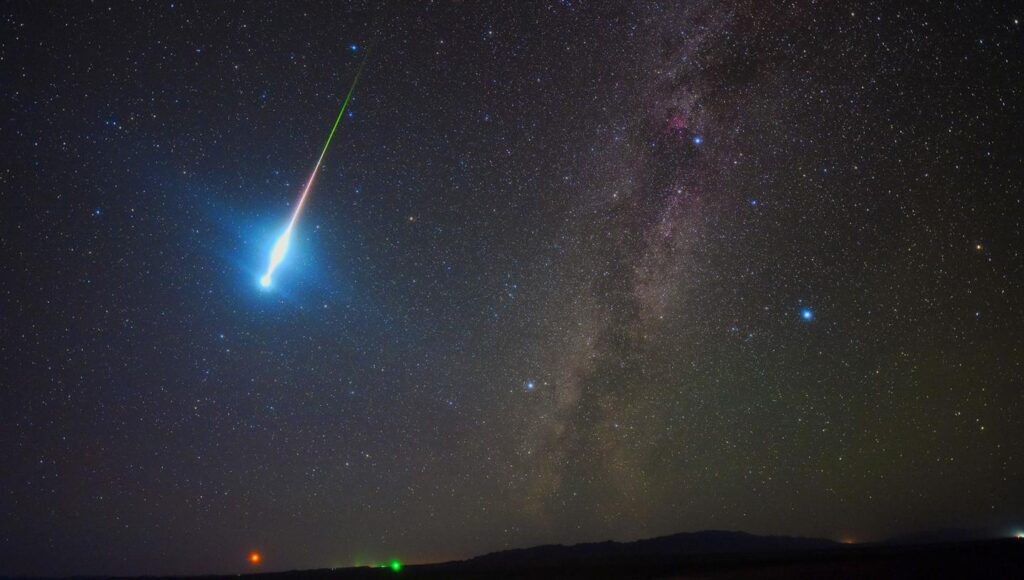Introduction
The night sky is a vast canvas, painted with celestial wonders that have captivated humanity for millennia. Among these celestial events, meteor showers hold a special place, offering a breathtaking display of shooting stars streaking across the inky blackness. One of the most anticipated annual meteor showers, the Geminids, is set to peak this year on the night of December 13th and into the early morning hours of December 14th.

What is a Meteor Shower?
Before we delve into the specifics of the Geminid meteor shower, let’s briefly understand what a meteor shower is. Essentially, it’s a celestial event where a number of meteors flash across the night sky, seemingly originating from a single point called the radiant. These meteors are tiny particles of dust and debris left behind by comets or asteroids as they orbit the Sun. When Earth passes through this debris field, these particles enter our atmosphere at high speeds, burning up and creating the dazzling streaks of light we call meteors.
The Geminid Meteor Shower: A Unique Phenomenon
Unlike most meteor showers that originate from comets, the Geminids are associated with an asteroid named 3200 Phaethon. This makes them a unique celestial event. The Geminids are known for their bright, colorful meteors, some of which can even appear as fireballs. Under ideal conditions, observers can witness up to 120 meteors per hour during the peak of the shower.
what time is the meteor shower tonight
To maximize your chances of witnessing the Geminid meteor shower, it’s essential to find a dark, secluded location away from city lights. The best time to observe the shower is in the late evening and early morning hours when the radiant point, the constellation Gemini, is high in the sky. However, you can start looking for meteors as soon as the sky darkens.
Tips for Optimal Viewing
- Find a Dark Sky: The darker the sky, the more meteors you’ll be able to see. Head to a rural area or a designated dark sky park for the best viewing experience.
- Get Comfortable: Bring a comfortable chair or blanket to lie down on. This will help you relax and scan the entire sky.
- Dress Warmly: Even on mild nights, temperatures can drop significantly after dark.
- Be Patient: Meteor showers are unpredictable. It may take some time to see a significant number of meteors. Don’t get discouraged; just relax and enjoy the night sky.
- Avoid Using Your Phone: The bright light from your phone can disrupt your night vision. Use a red flashlight if you need to see in the dark.
- Join a Meteor Shower Watch Party: Many astronomy clubs and organizations host meteor shower watch parties. These events can be a great way to learn more about meteor showers and connect with other stargazers.
Live Streaming the Geminid Meteor Shower
If you’re unable to step outside and observe the meteor shower in person, you can still enjoy the celestial spectacle through live streams. Many astronomy organizations and virtual observatories broadcast live feeds of the night sky during meteor shower peaks.
Conclusion
The Geminid meteor shower is a celestial event not to be missed. With its bright, colorful meteors and high peak activity rate, it promises to be a dazzling display for stargazers of all ages. By following these tips and finding a dark, clear sky, you can make the most of this year’s Geminid meteor shower. So, mark your calendars, grab a warm blanket, and prepare to be amazed by the wonders of the night sky.
Additional Tips
- Use a Meteor Shower App: There are several meteor shower apps available that can help you track the peak times, radiant location, and real-time meteor activity.
- Learn the Constellations: Familiarizing yourself with the constellations can help you identify the radiant point and navigate the night sky.
- Share Your Experience: Take photos or videos of the meteor shower and share them on social media using relevant hashtags. You can also join online astronomy communities to discuss your observations with other stargazers.